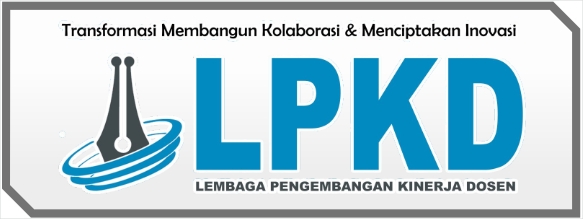Perbedaan Kadar Hemoglobin pada Ibu Hamil dengan Preeklamsi Ringan, Berat, dan Eklamsi di Rumah Sakit Umum Daerah (RSUD) Ciawi
DOI:
https://doi.org/10.55606/innovation.v1i3.1501Keywords:
Haemoglobin level, Preeclampsia, Pregnant womanAbstract
Measurement of haemoglobin (Hb) is a standard examination in pregnant women at the first prenatal visit that is used to evaluate physical status and anemia. One of the health conditions that often occurs and is important to note in reducing maternal and perinatal morbidity and mortality is anemia in pregnancy, which can increase the risk of infection, preeclampsia, postpartum hemorrhage, low birth weight babies, preterm birth, to death for both mother and child. fetus. This cross-sectional study aims to determine the difference in mean haemoglobin levels with the incidence of mild preeclampsia, severe preeclampsia and eclampsia which were selected according to the criteria by total sampling using medical record data in the period January 2020 - December 2020. The variables in this study consisted of the basic characteristics of the respondents (age mother and parity status), gestational age (weeks), and medical condition of the mother divided into three groups (mild, severe preeclampsia, and eclampsia). Statistical analysis using the Kruskall Wallis test. This study included 190 respondents with an average maternal age of 32 years and an average haemoglobin level of 10.86 with medical conditions dominated by severe preeclampsia (85.3%). The results of the study found that there was no significant difference in mean hemoglobin levels between the three groups of pregnant women (p-value: 0.235). To improve the quality of life of the mother and fetus, it is recommended that primary health services should be strengthened, prevention, early diagnosis and treatment of anemia in pregnancy should be prioritized.
References
Bilano, V. L., Ota, E., Ganchimeg, T., Mori, R., & Souza, J. P. (2014). Risk factors of pre-eclampsia/eclampsia and its adverse outcomes in low- and middle-income countries: A WHO secondary analysis. PLoS ONE. https://doi.org/10.1371/journal.pone.0091198
Dines, V., Suvakov, S., Kattah, A., Vermunt, J., Narang, K., Jayachandran, M., Abou Hassan, C., Norby, A. M., & Garovic, V. D. (2023). Preeclampsia and the Kidney: Pathophysiology and Clinical Implications. In Comprehensive Physiology (pp. 4231–4267). Wiley. https://doi.org/10.1002/cphy.c210051
Elgari, M. M., Khabour, O. F., & Alhag, S. M. (2019). Correlations between changes in hematological indices of mothers with preeclampsia and umbilical cord blood of newborns. Clinical and Experimental Hypertension, 41(1), 58–61. https://doi.org/10.1080/10641963.2018.1441861
Fishel Bartal, M., & Sibai, B. M. (2022). Eclampsia in the 21st century. American Journal of Obstetrics and Gynecology, 226(2), S1237–S1253. https://doi.org/10.1016/j.ajog.2020.09.037
Frank, I. O., Michael, J. M., Jenny, R., & Joseph, O. (2020). Prevalence and risk factors for pre-eclampsia/eclampsia in Northern Tanzania. Journal of Public Health and Epidemiology, 12(2), 78–85. https://doi.org/10.5897/JPHE2019.1143
Hlimi, T. (2015). Association of anemia, pre-eclampsia and eclampsia with seasonality: A realist systematic review. Health & Place, 31, 180–192. https://doi.org/10.1016/j.healthplace.2014.12.003
Ives, C. W., Sinkey, R., Rajapreyar, I., Tita, A. T. N., & Oparil, S. (2020). Preeclampsia—Pathophysiology and Clinical Presentations. Journal of the American College of Cardiology, 76(14), 1690–1702. https://doi.org/10.1016/j.jacc.2020.08.014
Jung, J., Rahman, M. M., Rahman, M. S., Swe, K. T., Islam, M. R., Rahman, M. O., & Akter, S. (2019). Effects of hemoglobin levels during pregnancy on adverse maternal and infant outcomes: a systematic review and meta‐analysis. Annals of the New York Academy of Sciences, nyas.14112. https://doi.org/10.1111/nyas.14112
Kasraeian, M., Asadi, N., Vafaei, H., Zamanpour, T., Raeisi-Shahraki, H., & Bazrafshan, K. (2018). Evaluation of serum biomarkers for detection of preeclampsia severity in pregnant women. Pakistan Journal of Medical Sciences, 34(4). https://doi.org/10.12669/pjms.344.14393
Maged, A. M., Aid, G., Bassiouny, N., Eldin, D. S., Dahab, S., & Ghamry, N. K. (2017). Association of biochemical markers with the severity of pre-eclampsia. International Journal of Gynecology & Obstetrics, 136(2), 138–144. https://doi.org/10.1002/ijgo.12029
Maged, A. M., ElNassery, N., Fouad, M., Abdelhafiz, A., & Al Mostafa, W. (2015). Third‐trimester uterine artery Doppler measurement and maternal postpartum outcome among patients with severe pre‐eclampsia. International Journal of Gynecology & Obstetrics, 131(1), 49–53. https://doi.org/10.1016/j.ijgo.2015.03.045
Maghsoudlou, S., Cnattingius, S., Stephansson, O., Aarabi, M., Semnani, S., Montgomery, S. M., & Bahmanyar, S. (2016). Maternal haemoglobin concentrations before and during pregnancy and stillbirth risk: a population-based case-control study. BMC Pregnancy and Childbirth, 16(1), 135. https://doi.org/10.1186/s12884-016-0924-x
Nanda, A. W., & Semarawisma, A. (2021). Association between anemia and preeclampsia: a case control study in Gorontalo region, Indonesia. International Journal of Research in Medical Sciences, 10(1), 31. https://doi.org/10.18203/2320-6012.ijrms20215031
Nasiri, M., Faghihzadeh, S., Alavi Majd, H., Zayeri, F., Kariman, N., & Safavi Ardebili, N. (2015). Longitudinal discriminant analysis of hemoglobin level for predicting preeclampsia. Iranian Red Crescent Medical Journal, 17(3), e19489. https://doi.org/10.5812/ircmj.19489
Nirupama, R., Divyashree, S., Janhavi, P., Muthukumar, S. P., & Ravindra, P. V. (2021). Preeclampsia: Pathophysiology and management. Journal of Gynecology Obstetrics and Human Reproduction, 50(2), 101975. https://doi.org/10.1016/j.jogoh.2020.101975
Pakniat, H., Movahed, F., Bahman, A., & Azoor, M. (2016). The Prediction of Preeclampsia and Its Association With Hemoglobin and Hematocrit in the First Trimester of Pregnancy. Biotechnology and Health Sciences, 3(3). https://doi.org/10.17795/bhs-36810
Rana, S., Lemoine, E., Granger, J. P., & Karumanchi, S. A. (2019). Preeclampsia. Circulation Research, 124(7), 1094–1112. https://doi.org/10.1161/CIRCRESAHA.118.313276
Ridho, R. H., Akbar, M. I. A., Fatmaningrum, W., & Santoso, B. (2021). Correlation between Anemia and Preeclampsia in Universitas Airlangga Hospital in 2017. JUXTA: Jurnal Ilmiah Mahasiswa Kedokteran Universitas Airlangga, 12(2), 61. https://doi.org/10.20473/juxta.V12I22021.61-65
Singgih, R., & Firmansyah, Y. (2020). Assessment of the Neutrophil Lymphocyte Ratio and Mean Platelet Volume in Pregnancy. Bioscientia Medicina : Journal of Biomedicine and Translational Research, 5(1), 85–93. https://doi.org/10.32539/bsm.v5i1.161
Singgih, R., Firmansyah, Y., & Dewi, A. K. (2021). Clinical ability of neutrophil–lymphocyte ratio in pregnancy as a predictor of preeclampsia. Journal of SAFOG, 13(3), 121–126. https://doi.org/10.5005/jp-journals-10006-1892
Soomro, S., Kumar, R., Lakhan, H., & Shaukat, F. (2019). Risk Factors for Pre-eclampsia and Eclampsia Disorders in Tertiary Care Center in Sukkur, Pakistan. Cureus. https://doi.org/10.7759/cureus.6115
Wang, C., Lin, L., Su, R., Zhu, W., Wei, Y., Yan, J., Feng, H., Li, B., Li, S., & Yang, H. (2018). Hemoglobin levels during the first trimester of pregnancy are associated with the risk of gestational diabetes mellitus, pre-eclampsia and preterm birth in Chinese women: a retrospective study. BMC Pregnancy and Childbirth, 18(1), 263. https://doi.org/10.1186/s12884-018-1800-7
Young, M. F., Oaks, B. M., Rogers, H. P., Tandon, S., Martorell, R., Dewey, K. G., & Wendt, A. S. (2023). Maternal low and high hemoglobin concentrations and associations with adverse maternal and infant health outcomes: an updated global systematic review and meta-analysis. BMC Pregnancy and Childbirth, 23(1), 264. https://doi.org/10.1186/s12884-023-05489-6



















